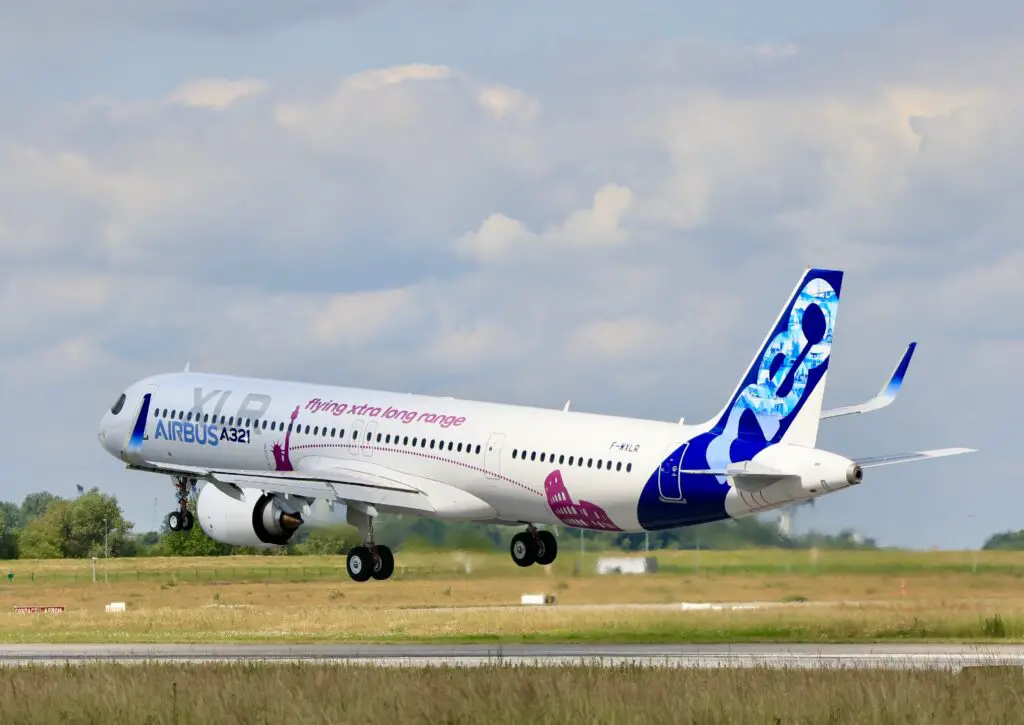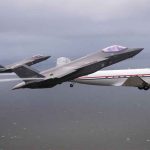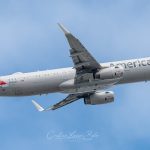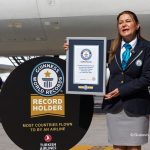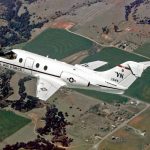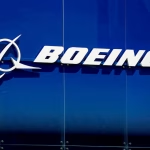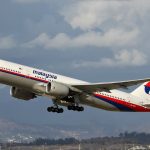In the coming weeks, two new units of the Airbus A321XLR will join the first aircraft (serial number MSN11000) in the flight test campaign.
The person in charge of the A321XLR program, Gary O’Donnell, outlined the road ahead towards certification. He said the manufacturer’s focus through the end of this year will be to complete construction and obtain flight authorization for these two test aircraft. Once that is achieved and with all three aircraft actively flying, production of the model is planned to be ramped up.
Actually, according to O’Donnell, there are four test aircraft: «The three XLRs have a sibling in the form of a regular «upgraded» A321neo, MSN6839. This aircraft has already been equipped with several features designed for the XLR, the executive added. Once flight activities have been completed and all the paperwork has been submitted – which is expected to be completed by the end of next year – it will be up to the aviation authorities. If certification is achieved quickly, deliveries to airlines would begin in 2024, O’Donnell added.
«Parallel to the entry into service, we have to adapt our entire industrial system, including tools and processes. This will have to be done not only at the Airbus factories that will build the model but also at suppliers around the world. Overall, securing the industrial system is a huge activity,» says O’Donnell. «Our third pillar is to secure all the documentation and manuals so that by the time we deliver the aircraft to the customer they can start using it immediately.»
Scope of flight tests
Philippe Pupin, who heads the program’s flight test engineering team -he was even on board during the first flight of the MSN11000 in June 2022- explains what will be analyzed during these tasks: «To become a long-range aircraft, the A321XLR needs to carry more fuel, which means increasing the maximum takeoff weight. In turn, this requires improved landing gear and braking systems.»
«As the thrust of the engines did not increase we made some aerodynamic changes to maintain performance. We modified the slats and flaps. Such modifications are not only physical but also involve reprogramming flight control computers. All this has to be flight tested and certified by the authorities,» Pupin added. Among others, changes to the XLR include single-slotted flaps, an electronically controlled vertical stabilizer, and upgraded landing gear, wheels, and brakes.

Software changes
With the A321XLR, Airbus also introduced some modern developments in the overall design of the flight control system, based on the original A321 architecture designed in the early 1990s. The objective is to homogenize the design of the flight control software while adhering to the manufacturer’s unified implementation of the Fly-By-Wire architecture.
All of these changes have added hours to the type certification requirements. «In terms of flight hours, the program falls between the requirements of a completely new aircraft and those of a new variant. We have to retest virtually everything related to aircraft design and flight physics,» Pupin said.
That’s when MSN6839, which began to be modified long before the first A321XLR left the Airbus factory, came into play. Changes included new inboard flaps, which means that this unit is aerodynamically equivalent to the XLR once the landing gear is retracted. This has allowed it, for example, to perform «minimum takeoff speed» tests, the absolute minimum speed at which an aircraft can take off.
Flight test assignments
Two of the aircraft, FTV1 (flight test vehicle, MSN11000) and FTV2 (MSN11058), will feature a water ballast system for center-of-gravity change tests. These units will conduct tests that will focus on technical systems, updated flight controls, and performance. The only major physical difference between these aircraft is the engines, as FTV1 is equipped with CFM LEAP-1A thrusters, while FTV2 uses P&W PW1100G GTF engines.
Jean-Philippe Cottet, head of the flight test, noted that this is the first time Airbus has run a certification campaign with two engine types in parallel. «We are certifying both engine types on the A321XLR, which is a first for Airbus. In the past, we certified the engine variants sequentially, one after the other.» For test scenarios where engine types are not relevant, FTV1 and FTV2 are interchangeable. «We can use either of them. To evaluate the A321XLR’s handling qualities we have to perform more than 100 flights, and only some of these are specific to FTV1 or FTV2,» Cottet adds.
Passenger cabin elements and en-route testing
The FTV3 (MSN11080), equipped with CFM LEAP engines, will focus on testing elements of the passenger cabin interior. It will also be responsible for en-route testing. Several issues outside the certification program must be evaluated when converting a medium-range aircraft to a long-range aircraft. For example, cabin comfort must be analyzed, both in terms of temperature and noise level.
In addition to evaluating the XLR’s interior, the FTV3 will be used to demonstrate the aircraft’s performance in route scenarios put forward by customers, especially the most demanding ones. «We need to demonstrate the aircraft’s performance from multiple types of runways. To do this, we plan to invite our customers to fly on our equipment, just as we did during the A330neo tests,» Cottet concluded.

